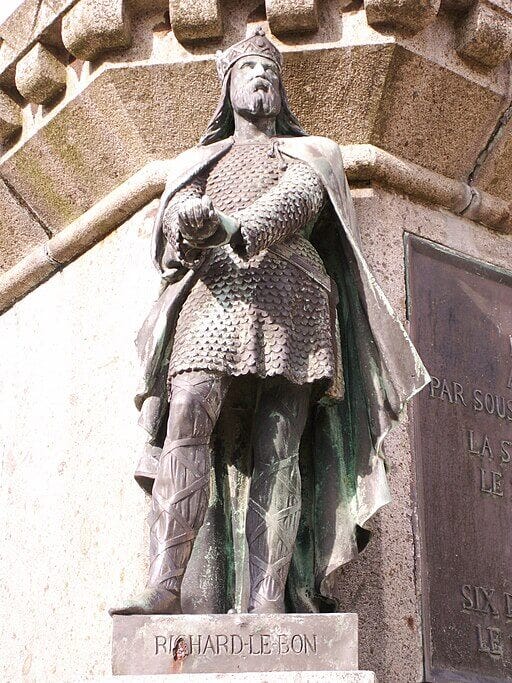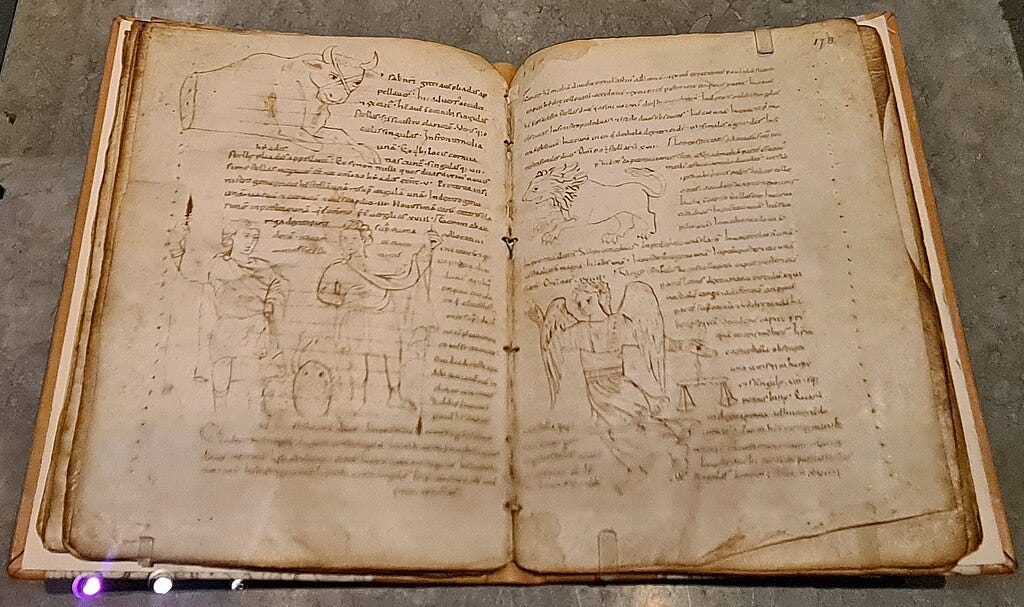A Viking Hostage
Viscountess Emma of Limoges
Book 3 of Adémar of Chabannes’ Chronicle of Aquitaine and France was written in the 11th century and is a key source for the 10th–11th century history of southern France. Adémar recounts that Viscountess Emma of Limoges made a pilgrimage to the abbey of Saint-Michel-en-Lherm on the west coast of France near Poitiers to attend the feast of the apostles on the 30 June. (He doesn’t say which year.) The abbey was raided by Vikings and Emma was kidnapped. The Vikings often scouted out information on saints’ festivals so they could raid when rich visitors were present and all the abbey’s treasures were on display.
Emma was returned three years later, after the intercession of Richard II, duke of Normandy. Richard was known as ‘the Good’ or 'the Irritable’ – an interesting paradox. Richard was of Viking descent and widely suspected of being in cahoots with the marauders.

Emma’s husband, Viscount Guy I of Limoges, had to pay an enormous ransom in silver. He appropriated most of the silver needed from the abbey in Limoges, much to their dismay.
What happened to Emma during the three years of her captivity I wondered? My novel The Viking Hostage is the outcome of that question.
Emma was the only child of Adémar, viscount of Ségur-le-Château and his wife Melisende and, therefore, the heiress of Ségur. Ségur-le-Château was a picturesque village and fortification on the banks of the river Auvézère. Sometime between 970 and 986 Emma became the wife of Guy, who succeeded as viscount of Limoges in 988.
The Vikings who kidnapped Emma could have been Norwegian or Danish. They could have held her hostage in any number of places including Dublin, the Isle of Mann, the Orkneys, Norway and Denmark. In my novel, I speculated that they were Norwegian vikings and held her on an island off the southwest coast of Wales. Vikings occupied many of the Welsh islands. Holding Emma not too far from France would have facilitated the exchange when the ransom could be paid.
I had imagined Emma as a redhead and was interested in the reports of a Viking Red Maiden involved in the raids on the Pembrokeshire coast near the Viking-occupied islands.
Several Viking hoards of silver have been found in southwest Wales. In 1991 a Viking sword guard was found in a shipwreck at Small Reefs in the Irish sea, between Dublin and Pembrokeshire. As a noblewoman up for ransom, Emma was a valuable commodity and would probably not have been set to the most gruelling slave work. She may have been involved in the production of textiles, including sails for the Viking ships, during her captivity.

Emma is documented in charters issued in Limoges that may have dated from 988 and certainly dated from 1001 until 1025. The kidnap probably happened, then, before 988, when she was a young woman. In my novel, I speculate that she was betrothed to Guy at the time of her kidnap rather than already married to him. After her return, she lived the usual life of a viscountess in Limoges. Her husband, Guy, died in 1025 and her son, Adémar became the new viscount.
Adémar of Chabannes (c. 988–1034) was a monk at the Abbey of Saint Martial in Limoges and distantly related to the counts of La Marche. Along with his chronicle writing, he was also a composer and a notorious forger (not regarding the chronicle but regarding his claim that Saint Martial was one of the original apostles). Adémar appears briefly in my novel.

This post first appeared on France’s Splendid Centuries. Follow that page for more posts on French history.
SOURCES
Cawley, C. (2019). Medieval lands: A prosopography of medieval European noble and royal families. https://fmg.ac/Projects/MedLands/
de Chabannes, A. (2003). Chronique, edited and translated by Chauvin, Y. & Pon, G. Turnhout. Written in the 11th century.
Redknap, M. (2000). Vikings in Wales: An archeological quest. National Museums & Galleries of Wales.
Segur-Le-Château https://www.segurlechateau.org/en/






Lots of questions: how would the kidnappers know who she was? who else was taken with her? would they all be female? what happened to her attendants, male and female?
A fascinating insight and a great article. The book cover is gorgeous. I wish the novel well.